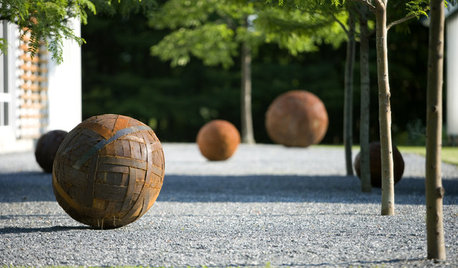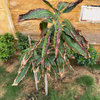Best Kind of Mulch for Fruit Trees?
sun_worshiper
13 years ago
Featured Answer
Sort by:Oldest
Comments (50)
mango_kush
13 years agolast modified: 9 years agoRelated Professionals
Jennings Landscape Architects & Landscape Designers · Kyle Landscape Architects & Landscape Designers · Saint Matthews Landscape Architects & Landscape Designers · Walnut Landscape Architects & Landscape Designers · White Oak Landscape Architects & Landscape Designers · Goodyear Landscape Contractors · Biloxi Landscape Contractors · East Chicago Landscape Contractors · Lake Worth Landscape Contractors · Lexington Landscape Contractors · Pompano Beach Landscape Contractors · Rockwall Landscape Contractors · Seven Hills Landscape Contractors · South Lake Tahoe Landscape Contractors · Southbury Landscape Contractorssun_worshiper
13 years agolast modified: 9 years agomango_kush
13 years agolast modified: 9 years agomango_kush
13 years agolast modified: 9 years agofranktank232
13 years agolast modified: 9 years agonullzero
13 years agolast modified: 9 years agohmhausman
13 years agolast modified: 9 years agojsvand5
13 years agolast modified: 9 years agopuglvr1
13 years agolast modified: 9 years agomilque_toast
13 years agolast modified: 9 years agojb_fla
13 years agolast modified: 9 years agomurahilin
13 years agolast modified: 9 years agosun_worshiper
13 years agolast modified: 9 years agopuglvr1
13 years agolast modified: 9 years agojb_fla
13 years agolast modified: 9 years agojeffhagen
13 years agolast modified: 9 years agopuglvr1
13 years agolast modified: 9 years agohmhausman
13 years agolast modified: 9 years agojeffhagen
13 years agolast modified: 9 years agojeffreyd_green
13 years agolast modified: 9 years agosun_worshiper
13 years agolast modified: 9 years agomango_kush
13 years agolast modified: 9 years agojeffhagen
13 years agolast modified: 9 years agojeffhagen
13 years agolast modified: 9 years agozands
13 years agolast modified: 9 years agomango_kush
13 years agolast modified: 9 years agosun_worshiper
13 years agolast modified: 9 years agojeffhagen
13 years agolast modified: 9 years agozands
13 years agolast modified: 9 years agomango_kush
13 years agolast modified: 9 years agofranktank232
13 years agolast modified: 9 years agozands
13 years agolast modified: 9 years agosun_worshiper
13 years agolast modified: 9 years agomango_kush
13 years agolast modified: 9 years agozands
13 years agolast modified: 9 years agosun_worshiper
13 years agolast modified: 9 years agomango_kush
13 years agolast modified: 9 years agosun_worshiper
13 years agolast modified: 9 years agomango_kush
13 years agolast modified: 9 years agozands
13 years agolast modified: 9 years agomango_kush
13 years agolast modified: 9 years agomurahilin
13 years agolast modified: 9 years agosun_worshiper
13 years agolast modified: 9 years agojb_fla
13 years agolast modified: 9 years agosun_worshiper
13 years agolast modified: 9 years agojohndalter
12 years agolast modified: 9 years agohmhausman
12 years agolast modified: 9 years agognappi
12 years agolast modified: 9 years agoVictor Mauricio
8 years ago
Related Stories

GARDENING GUIDESThe Art of Green Mulch
You can design a natural garden that doesn’t rely on covering your soil with wood and bark mulch
Full Story
EDIBLE GARDENSHow to Grow 10 Favorite Fruit Trees at Home
Plant a mini orchard in fall, winter or early spring to enjoy fresh-off-the-tree fruit the following year
Full Story
FARM YOUR YARDIf You Have Room for Only One Fruit Tree ...
Juice up a small garden with one of these easier-care or worth-the-effort fruit trees for a mild climate
Full Story
EDIBLE GARDENSGrow Plum Hybrids for Your Favorite Fruit Flavors
Plums are cozying up with apricots, peaches and even cherries — here’s how to grow these hybrids for the best aspects of each
Full Story
GARDENING GUIDESGreat Design Plant: Grow Blueberries for Their Fruit and More
Eastern gardeners should consider growing blueberry plants for their delicious fruits, bee-friendly spring blooms and brilliant fall foliage
Full Story
LANDSCAPE DESIGNWhat Kind of Gardener Are You? Find Your Archetype
Pick from our descriptions to create a garden that matches your personality and tells your story
Full Story
GARDENING GUIDESNew Ways to Think About All That Mulch in the Garden
Before you go making a mountain out of a mulch hill, learn the facts about what your plants and soil really want
Full Story
GARDENING GUIDESHow to Pick a Mulch — and Why Your Soil Wants It
There's more to topdressing than shredded wood. Learn about mulch types, costs and design considerations here
Full Story
EDIBLE GARDENSHow to Add an Apple Tree to Your Edible Garden
Readily available, beautiful and fragrant, apple trees offer four-season interest along with crisp, juicy fruit
Full Story
GARDENING GUIDESHow to Keep Your Citrus Trees Well Fed and Healthy
Ripe for some citrus fertilizer know-how? This mini guide will help your lemon, orange and grapefruit trees flourish
Full StorySponsored
More Discussions








hmhausman